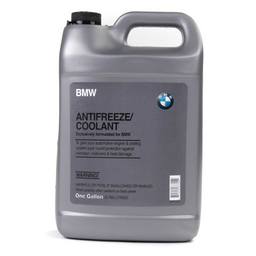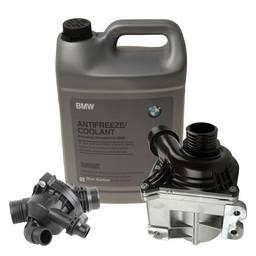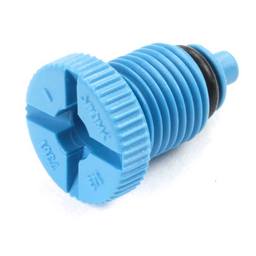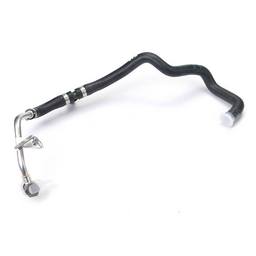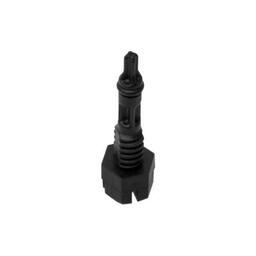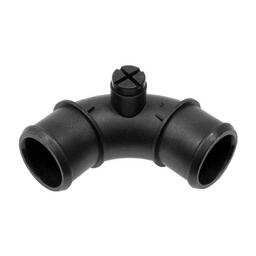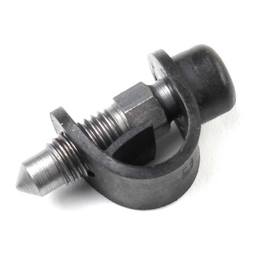If there’s one thing BMW engines don’t like, it’s to run on old coolant. As a matter of fact, some BMWs are borderline notorious for having sensitive cooling systems (looking at you E46). Long story short, you should stay on top of your coolant change schedule. Today we’re going to talk about what kind of BMW coolant you should use and how to bleed the system in cars with the electric water pump. Let’s get started!
Getting the Right Antifreeze for your BMW
There are two kinds of people out there – those who grab any kind of antifreeze off the rack and those who care about their engines. As far as BMWs go, you should strive to be the latter. It’s no secret that BMW makes engines that are sensitive to certain aspects of maintenance. Choosing the right kind of coolant is one of them.
We generally suggest that you go with the Genuine BMW coolant whenever possible. There are other options on the market that fit BMW’s parameters. However, sticking to what the factory recommends is a safe bet.
You can find which antifreeze is right for your car in your user’s manual. Additionally, you can always consult with our staff via email or by filling out the form on our contact page. Our reps are standing by to help you with any questions you might have regarding antifreeze.
Aside from the coolant itself, we’ll need distilled water. 99% of our audiences know that you should never mix tap water with your coolant, but it’s probably worth mentioning that tap water is full of things you don’t want floating around in your cooling system.
The mix you’re looking for is a 50/50 ratio of distilled water and antifreeze. Some may find this to be an aggressive mix, especially in hotter climates, but the 50/50 mix does the best job at lubricating the water pump and protecting the engine.
The Tools for the Job
Doing a coolant flush on BMWs is a fairly simple process. However, you’ll need a few basic tools. Here’s a short list of things that will come handy during this procedure:
- Drain pan of some sort. We recommend that you get a large drain pan as it makes life easier.
- Socket wrench to remove the splash shields underneath the car if necessary
- A screwdriver or Allen key depending what type of drain plugs your car has
- A funnel
There are also complete coolant flush kits out there that come with these malleable plastic guides you can use to funnel the antifreeze into the drain pan. However, none of that is necessary to get the job done. The things we’ve listed is more than enough to do a complete flush without too much hassle.
Performing a Coolant Flush on a BMW Engine
Now that we have everything we need, we can get started. First thing first, lift the car. All standard precautions apply. Use jack stands if you’re doing this in your driveway. Drop the tire under the vehicle as well, while you could also block the rear wheels just in case.
With the car safely in the air, proceed to remove the splash shield to reach the engine drain plug as well as the radiator drain plug. Different BMW engines will have the plug in different places. Usually, it will either be near the front of the engine or near the rear of the block.
Drain the Coolant
With both the engine and radiator drain located and easy to reach, it’s time to drain the coolant. Start by removing the engine block drain plug. Make sure that your drain pan is right where it needs to be. If you have some extra time, let the car drain for a little bit. This will ensure that the block is about as dry as it gets.
One the block is done, make sure to put the drain plug back in its place. Next up, it’s time to drain the radiator. Scoot the drain pan forward and find the radiator drain plug. You’ll usually find the plug near the radiator’s corners, although they can be in other places depending on your model. Find the plug and remove it to drain the coolant from the radiator.
Apply the same process here as with the engine block. In other words, let the radiator drain for a while and make sure to return the plug once it’s dry.
Do a System Flush Using Distilled Water
With the entire cooling system drained, it’s time to do a quick flush using distilled water. With all the drain plugs back in place, fill the system with distilled water. Turn the car on and put the heater on max. Run the engine until it reaches the normal working temperature and opens the thermostat. When that happens, you can shut down the engine off and perform the draining procedure, as we’ve described above.
The reason for doing a flush is to get all the remaining coolant out of the engine. While draining the engine removes most of the coolant, there’s always a small amount left behind. By flushing the system and running distilled water through it, you’ll catch all of that residue and flush it out along with that water.
Refill the System with New Coolant
Now that the entire cooling system is clear of old antifreeze, it’s time to add the new stuff. Do a double check on all of the drain plugs just in case and if all is good, get your coolant. If your engine takes 10 liters of coolant, you’ll apply 5 liters of antifreeze and 5 liters of distilled water. Remember, we’re going for that 50/50 mix.
Here’s where things get a little tricky. If your engine is equipped with a bleeder screw, this is the time to open it. If your car doesn’t have a bleeder screw, simply move on to adding the coolant.
You’ll do this by removing the expansion tank cap and slowly filling the tank with your mixture. As the system fills up, you’ll start seeing coolant coming out of the bleeder valve. At this point, close the valve and fill the expansion tank to the lower point of the filler neck.
Bleeding Procedure
If your engine has the older mechanical water pump and is fitted with bleeder valves, you’ll have to do the bleeding the old fashioned way.
In this case, you’ll want to add the antifreeze portion of the mix first and then start adding distilled water. Once you can’t put any more distilled water into the engine, start the car and turn the heat up to the max setting.
The coolant level will start to drop as the cooling system starts circulating the mixture. Make sure to have the bleeder valve open at this point. As the car warms up, the coolant levels will continue dropping. Keep adding the coolant until the bleeder valve starts overflowing with liquid and is no longer releasing air.
If the car reaches normal operating temperature and stays there, you’ve got all of the air out of the system. On the other hand, if the engine goes passed the normal temperature and reaches ¾ of the scale, you’ve still got some air in the system. Shut the engine off, let it cool down and then repeat the process.
Bleeding Procedure on Cars Fitted with the Electric Water Pump
In case your car has the electric water pump, it has a self-bleed feature. Once you’ve filled the expansion tank with the 50/50 mixture and your bleeder valve is flowing with coolant (if you have a bleeder valve), tighten the bleeder screw, put the cap back on the tank and apply the following procedure:
- Connect the battery if disconnected
- Get in the car and turn the ignition to the ON position (If your car has a START button, you’ll want to press it with the key fob active. However, don’t depress the clutch or brake pedal. This way you’ll activate the ignition without actually starting the engine)
- Set your heater temperature to the highest setting and set the blower to the lowest speed
- Press the gas pedal to the floor and hold it there for 12 seconds
- At this point, the pump will start working, and you can get out of the car.
This procedure lasts for about 10-12 minutes, depending on the car. Once done, check the coolant levels one more time just in case.
How Often Should You Replace Your Coolant?
The recommended coolant replacement period for most BMWs is two to three years. We recommend that you make that two years rather than 3. The BMW recommended antifreeze is packed with all kinds of additives. Some of them are geared towards ensuring the right antifreeze properties, but some are also there to prevent corrosion, ensure lubrication, and generally protect the cooling system. It is these additives that lose their properties once you reach the 2-year mark.


